Exploration of Nanosilver Calcium Alginate-Based Multifunctional Polymer Wafers for Wound Healing
- PMID: 36839805
- PMCID: PMC9968014
- DOI: 10.3390/pharmaceutics15020483
Exploration of Nanosilver Calcium Alginate-Based Multifunctional Polymer Wafers for Wound Healing
Abstract
Wound care is an integral part of effective recovery. However, its associated financial burden on national health services globally is significant enough to warrant further research and development in this field. In this study, multifunctional polymer wafers were prepared, which provide antibacterial activity, high cell viability, high swelling capacity and a thermally stable medium which can be used to facilitate the delivery of therapeutic agents. The purpose of this polymer wafer is to facilitate wound healing, by creating nanosilver particles within the polymer matrix itself via a one-pot synthesis method. This study compares the use of two synthetic agents in tandem, detailing the effects on the morphology and size of nanosilver particles. Two synthetic methods with varying parameters were tested, with one method using silver nitrate, calcium chloride and sodium alginate, whilst the other included aloe vera gel as an extra component, which serves as another reductant for nanosilver synthesis. Both methods generated thermally stable alginate matrices with high degrees of swelling capacities (400-900%) coupled with interstitially formed nanosilver of varying shapes and sizes. These matrices exhibited controlled nanosilver release rates which were able to elicit antibacterial activity against MRSA, whilst maintaining an average cell viability value of above 90%. Based on the results of this study, the multifunctional polymer wafers that were created set the standard for future polymeric devices for wound healing. These polymer wafers can then be further modified to suit specific types of wounds, thereby allowing this multifunctional polymer wafer to be applied to different wounding scenarios.
Keywords: alginate; cross-linked; nanosilver; wound healing.
Conflict of interest statement
The authors declare no conflict of interest.
Figures

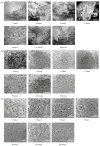

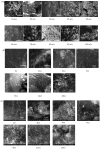


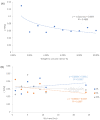


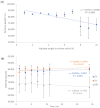

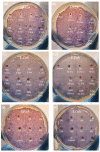




Similar articles
-
Release Behavior and Antibacterial Activity of Chitosan/Alginate Blends with Aloe vera and Silver Nanoparticles.Mar Drugs. 2017 Oct 24;15(10):328. doi: 10.3390/md15100328. Mar Drugs. 2017. PMID: 29064431 Free PMC article.
-
Microbial alginate dressings show improved binding capacity for pathophysiological factors in chronic wounds compared to commercial alginate dressings of marine origin.J Biomater Appl. 2017 Apr;31(9):1267-1276. doi: 10.1177/0885328217702173. Epub 2017 Mar 29. J Biomater Appl. 2017. PMID: 28355974
-
Multifunctional medicated lyophilised wafer dressing for effective chronic wound healing.J Pharm Sci. 2014 Jun;103(6):1720-33. doi: 10.1002/jps.23968. Epub 2014 Apr 3. J Pharm Sci. 2014. PMID: 24700434
-
Nano-silver functionalized polysaccharides as a platform for wound dressings: A review.Int J Biol Macromol. 2022 Jan 1;194:644-653. doi: 10.1016/j.ijbiomac.2021.11.108. Epub 2021 Nov 22. Int J Biol Macromol. 2022. PMID: 34822832 Review.
-
Polymer-based biomaterials for chronic wound management: Promises and challenges.Int J Pharm. 2021 Apr 1;598:120270. doi: 10.1016/j.ijpharm.2021.120270. Epub 2021 Jan 21. Int J Pharm. 2021. PMID: 33486030 Review.
References
-
- JCN Reality of wound care in 2017: Findings from interactive voting pads. J. Community Nurs. 2018;32:56–61.
-
- Rangaraj A., Harding K., Leaper D. Role of collagen in wound management. Wounds. 2011;7:2.
Grants and funding
LinkOut - more resources
Full Text Sources

